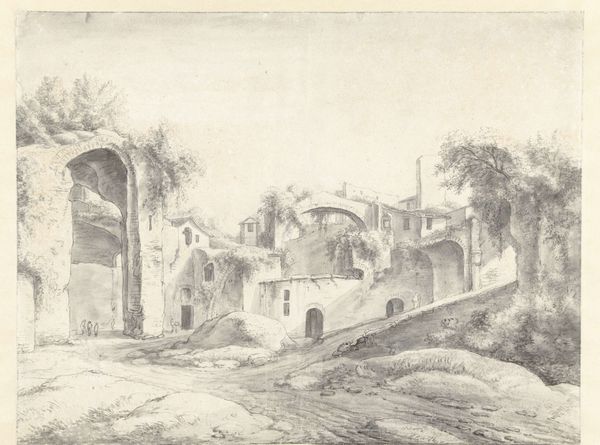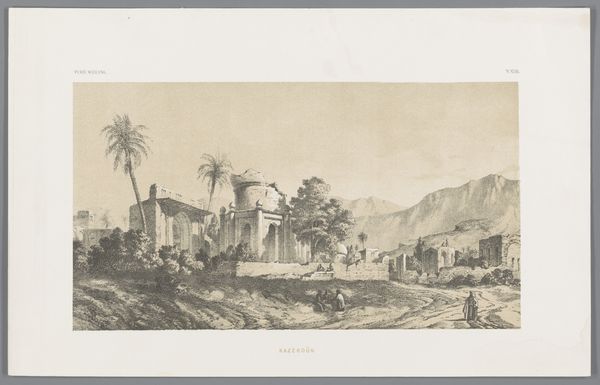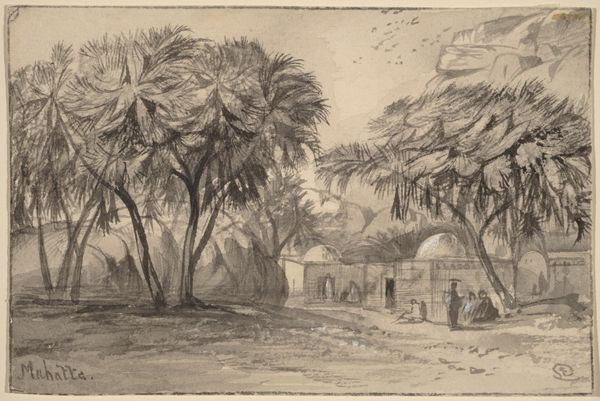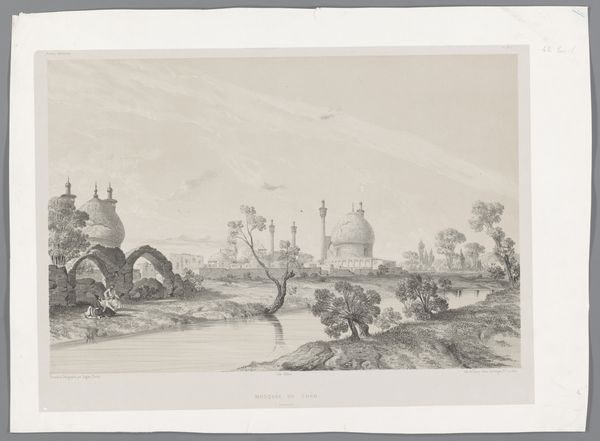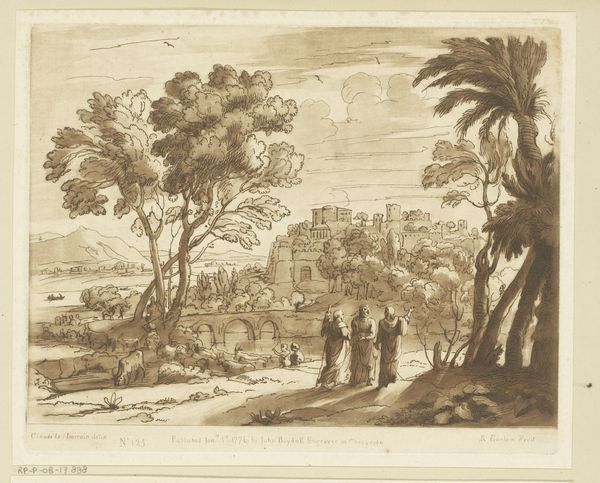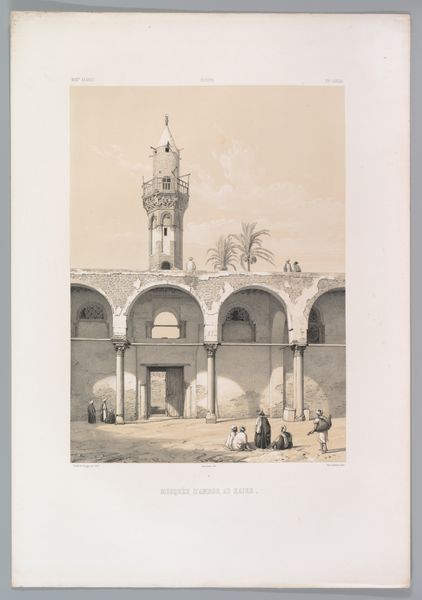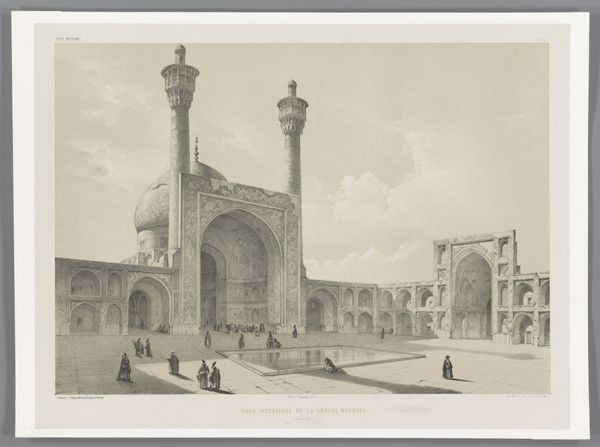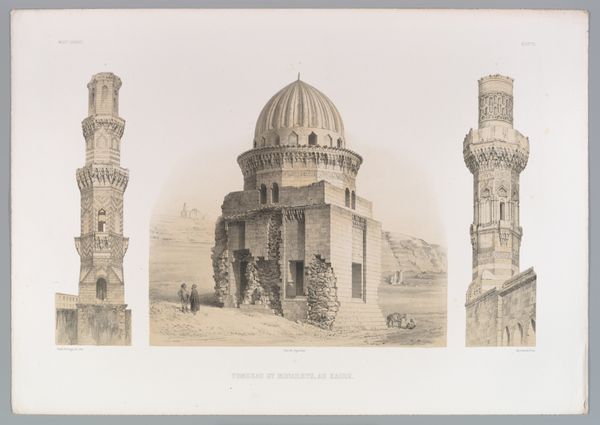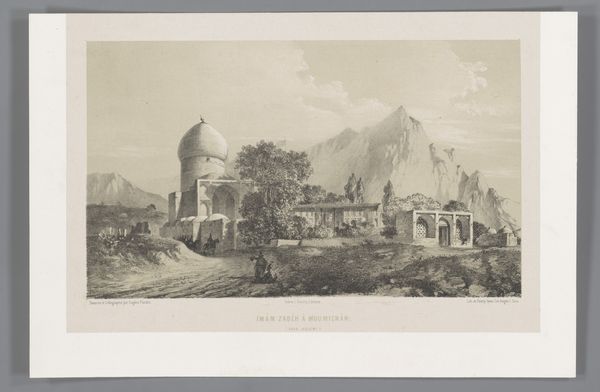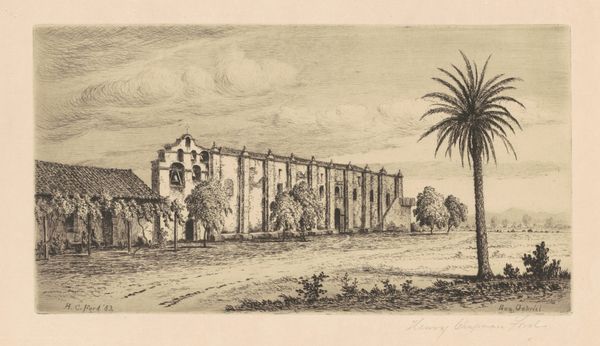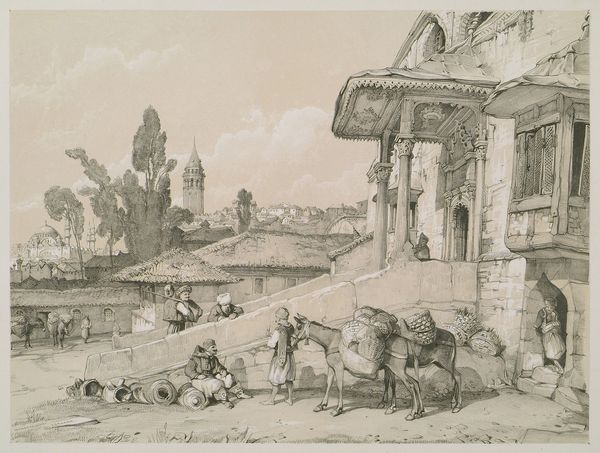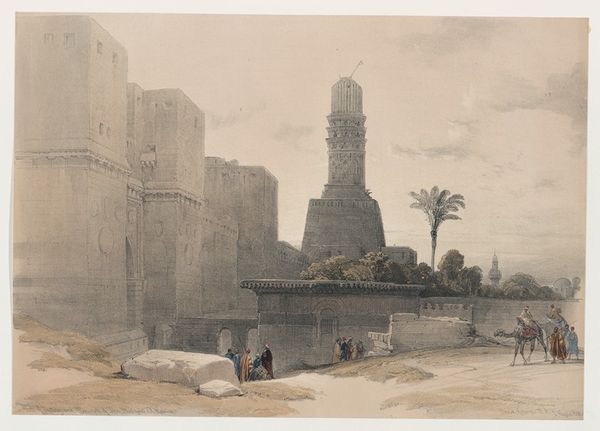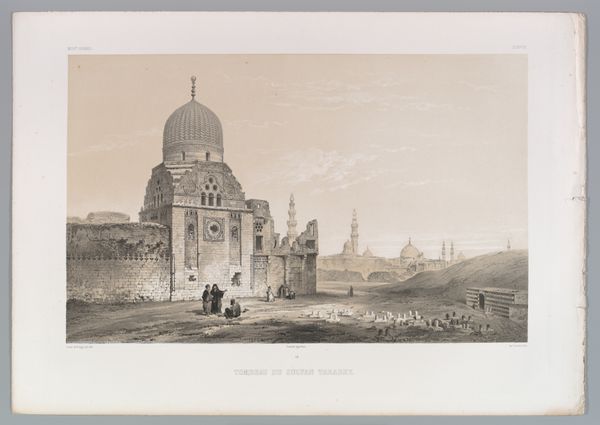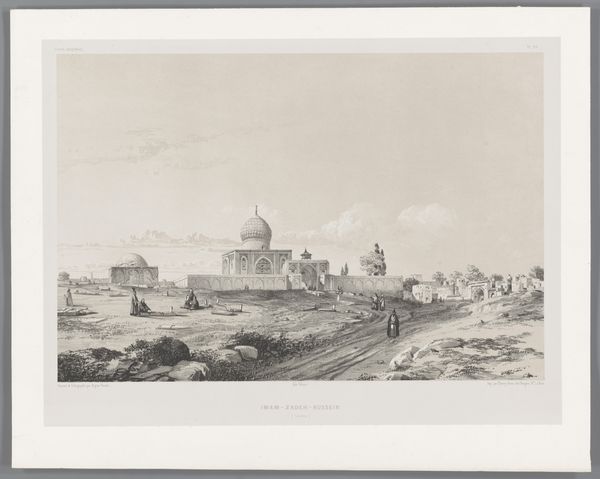
Tombs of Great Arab Saints to be seen in the Neighborhood of Rosetta, Egypt 1795 - 1805
0:00
0:00
drawing, print, watercolor
#
drawing
#
water colours
# print
#
landscape
#
ancient-egyptian-art
#
watercolor
#
egypt
#
coloured pencil
#
orientalism
Dimensions: sheet: 13 5/16 x 21 1/4 in. (33.9 x 54 cm)
Copyright: Public Domain
Curator: This watercolour by Luigi Mayer, titled "Tombs of Great Arab Saints to be seen in the Neighborhood of Rosetta, Egypt," was made sometime between 1795 and 1805. Editor: My initial impression is one of serene, faded grandeur. The muted colors and detailed rendering create a scene that feels both idyllic and historically weighty. The human presence breathes life into this almost dreamlike Egyptian vista. Curator: Absolutely. Mayer, as part of the Orientalist movement, was deeply involved in documenting the region, which begs the question: for whom was this image created, and what purpose did it serve? Were these meant as accurate ethnographic records, exotic travel souvenirs, or something in between? Editor: Interesting, because looking at the drawing from the vantage of its material construction, the washes of watercolor, combined with what seems to be the precision of coloured pencil, indicate a detailed and controlled method. This implies an intention beyond just capturing a fleeting impression; there's an attempt to render a specific atmosphere for the Western gaze. How does the very choice of watercolor influence our reading, compared to, say, oils or a more graphic medium? Curator: The use of watercolour aligns well with the conventions of topographical views popular in Europe during this period. These images held immense social and political significance, contributing to Europe's understanding and framing of the Eastern world, effectively shaping colonial narratives. Editor: The choice of medium does, in essence, render Egypt in soft light. By implication it gentles its otherness, for a Europe well acquainted with watercolors as a landscape medium, rendering it more palatable for a distanced consumer. The layering of human figures – seemingly common people using the sacred space of the tombs in very practical ways - emphasizes that element of consumption. Curator: Mayer's work highlights the role art plays in constructing cultural understanding. These depictions weren't neutral; they actively participated in an exchange of power and influence, between colonizer and colonized. It compels us to ask questions about what those images perpetuated. Editor: Ultimately, appreciating Mayer's rendering necessitates examining not just its intrinsic artistry but understanding how that artistry intertwined with the social and political context in which both it and he flourished, its audience’s desires, and even its very consumption. Curator: Indeed. By understanding its historical purpose, and by evaluating how cultural values mediated this artistic project, we can interpret these types of picturesque vistas more comprehensively.
Comments
No comments
Be the first to comment and join the conversation on the ultimate creative platform.
